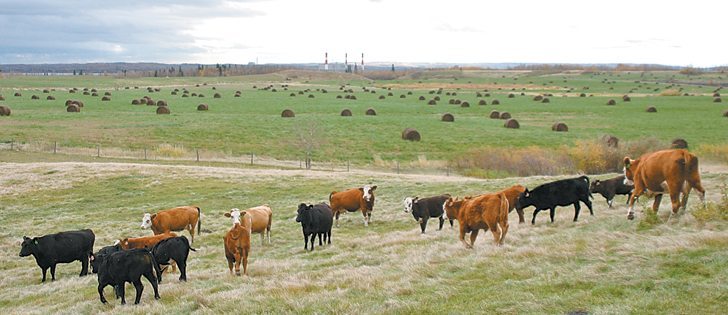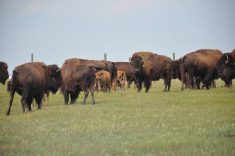RED DEER — A proposal to change Alberta’s grazing lease agreements is not likely to be settled until next fall.
The major cattle groups met last November and agreed to increased rates.
Formulas were created to calculate rates that considered associated costs and profits derived from a lease.
Rental rates would be calculated as a base rate plus an annually in-creasing percentage of a premium over the base rate.
Increases would be phased in over five years, and rates would be adjusted if the cattle market declined.
Read Also

Trump’s tariffs take their toll on U.S. producers
U.S. farmers say Trump’s tariffs have been devastating for growers in that country.
“In good times we share the rewards and in bad times we share the risk,” Larry Sears, chair of the Alberta Grazing Leaseholders Association, said during the group’s annual meeting in Red Deer Feb. 18.
The Western Stock Growers Association, the Alberta Grazing Leaseholders Association, Alberta Beef Producers and the Northern Alberta Grazing Leaseholders Association agreed in principle to the increases, but the required legislative changes have been delayed from the spring to fall sitting of the provincial government.
Approximately 6,500 leaseholders use more than five million acres of land in the agricultural area known as the white zone.
Rental rates were established in 1994 and have not changed since. The southern zone was charged $2.79 per animal unit month, the central zone paid $2.32 and the north paid $1.39.
The new proposal would divide the province into two zones on either side of Highway 16.
Assignment fees would be changed to a flat charge to cover administration costs.
The proposal also suggested a range sustainability fund with contributions coming from 40 percent of the rental rate.
The government would use the money to fund research and education projects with groups such as Cows and Fish, the Alberta Grazing Leaseholders Association, the Western Stock Growers Association and the Alberta Native Plants Council.
The South Saskatchewan regional plan, which was released last year, suggested rewards for good management, said Dan Smith of the provincial environment and sustainable resource development department’s public lands branch.
“It suggested leaseholders who demonstrated exemplary stewardship should be duly rewarded with extended tenure on their grazing leases,” he said at the leaseholders’ meeting.
The standard tenure is 10 years, so good managers could get a 20 year term if this policy is approved and those on heritage rangelands would get up to 30 years.
The Alberta Land Stewardship Act also made provisions for recognizing ecosystem goods and services in which leaseholders could be paid for outstanding management.
Rancher Norm Ward of Granum said the government should be paying producers as ecosystem managers who look after the land, habitat and water.
A study is needed to assess how to compensate ranchers fair market value for ecosystem goods and services.
“The lease producing beef is a very small component now of what that lease actually produces,” said Ward.
The perception in Canada is one of unlimited resources that are available to everyone, said Amanda Miller of the public lands branch.
“Canada as a whole is quite far behind on ecological goods and services,” she said. “We haven’t been able to get the marketplace supported and it is something we need to look at.”
















